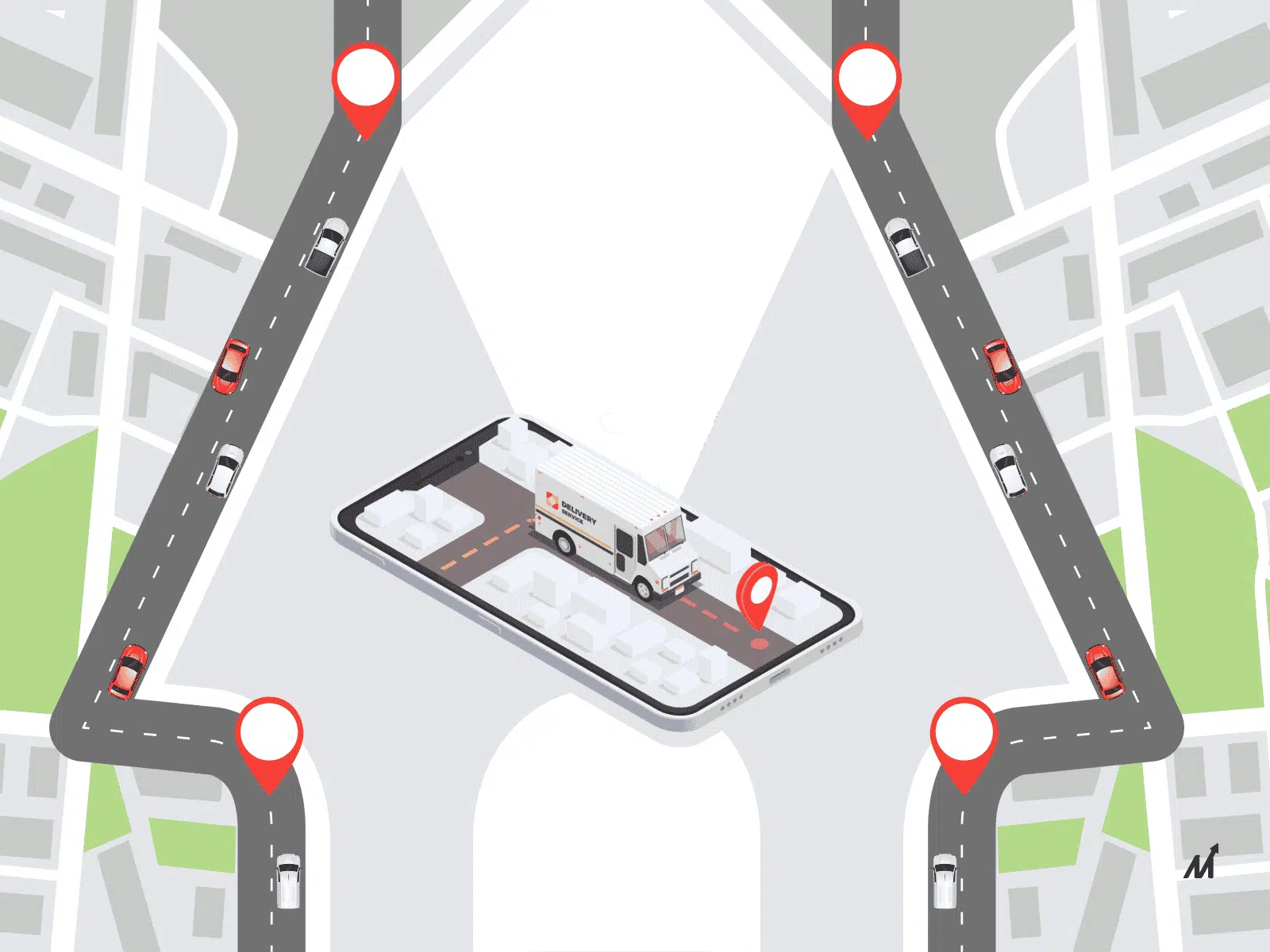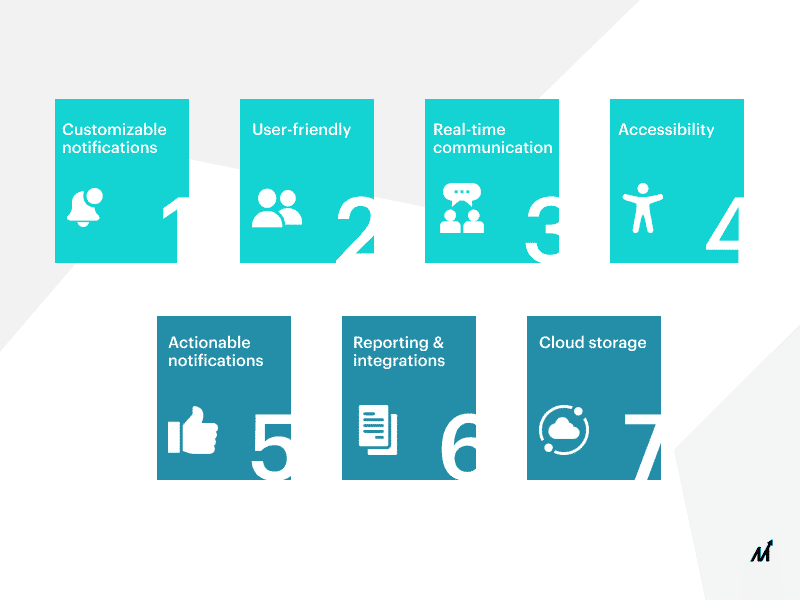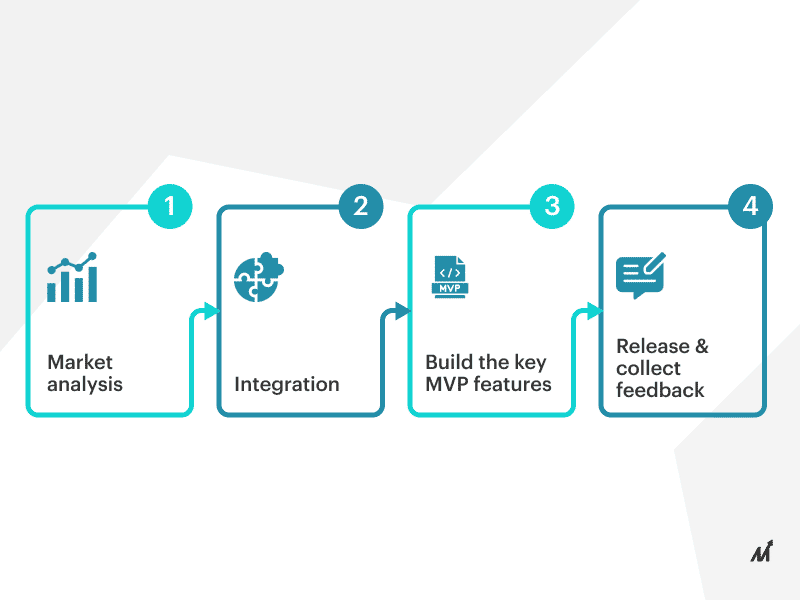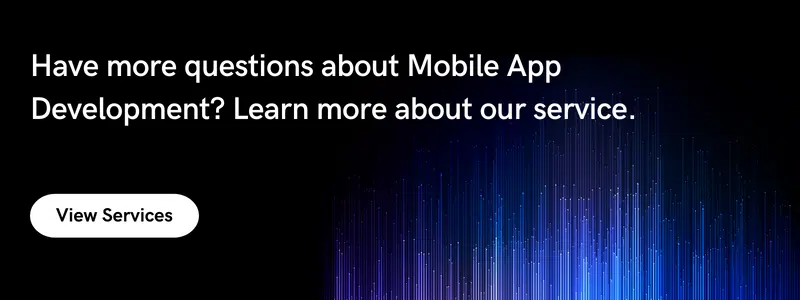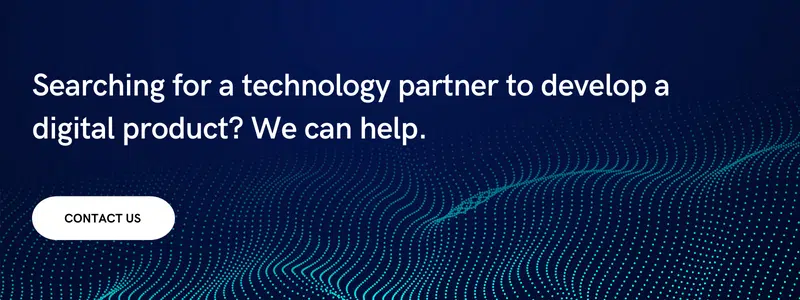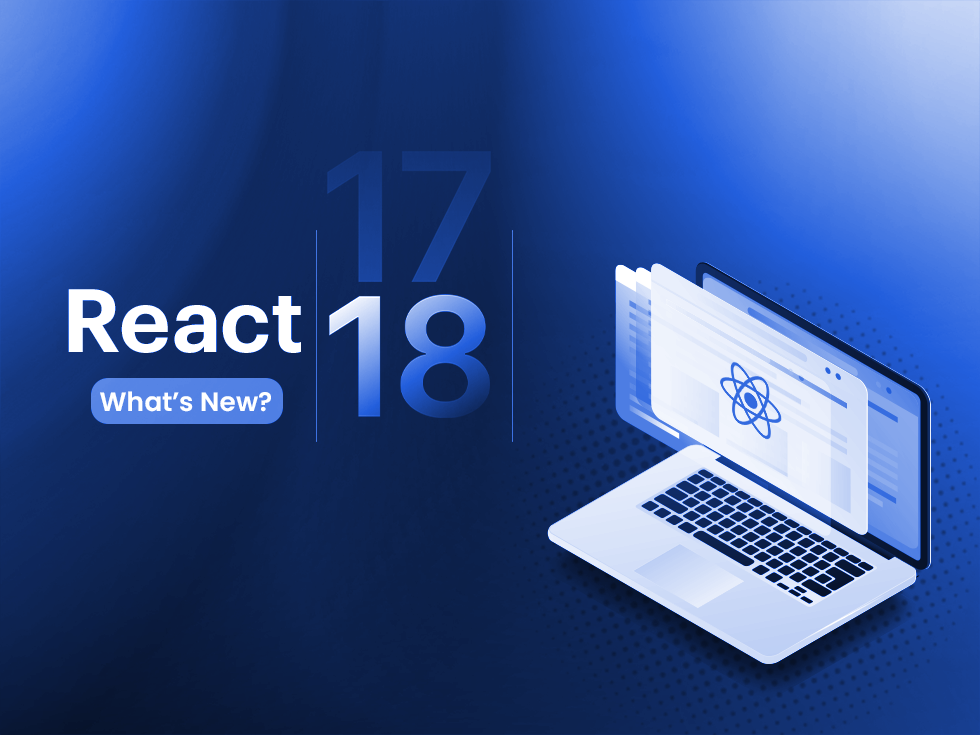Logistics App Development: Introduction
It can be exhausting to supervise all transportation and logistical operations at all times constantly. Right?
Supervisors must pay close attention and invest considerable effort to ensure the flawless completion of each assignment. As a result, it assists your logistics company in providing good customer service. The logistics industry has grown increasingly competitive over the past few years for faster and better delivery services for customers and future growth.
To ensure that your logistics firm follows the proper cycle. The logistics business cycle involves managing the warehouse, assuring proper delivery, tracking fleet positions, driving safety, and fleet maintenance, all while maintaining transparency. However, what would be your best method for handling logistics management easily?
The solution is to create a mobile logistics app, so your work is carried out flawlessly across all departments. As a result, we’ve conducted an extensive study and acquired all of the necessary data to construct a logistics app.
Why Is Logistics App Development Necessary For Transportation Businesses?
The effectiveness of on-demand services necessitates ongoing contact between various structural units in different regions. Mobile app development for transportation companies is now the primary instrument for enhancing client confidence and loyalty, coordinating interactions across various company divisions, lowering service costs, and streamlining operations.
Areas In Which Logistic Apps Can Be Used:
- Transport logistics
- Routing
- Goods monitoring
- Forwarding
- Warehouse logistics
- Inventory management
- Transport management
Different Types Of Logistics Apps
We’ve discussed logistics app development ideas, but it’s also crucial to understand what types of mobile apps the logistics application development team can provide.
1. On-demand Logistics Applications
An on-demand logistics app could help boost your income if your trucks aren’t always fully loaded. In the commercial sphere, such solutions are similar to Glovo. This is how it works:
- Shippers create requests.
- The nearest driver receives the message with a spare room in their vehicle, who accepts the request and picks up the freight.
- The shipper keeps track of the cargo’s location and receives notifications on its status.
- The system gives the shipper an invoice after the freight has been delivered.
For example, Uber Freight is the most well-known on-demand logistics app.
2. Fleet Management Applications
With such a large vehicle fleet, it is vital to keep track of information on each vehicle and keep it up to date. The fleet management app allows you to track, manage, and store your truck’s data.
You can monitor vehicle maintenance histories, fuel consumption statistics, maintenance expenses, and other vital metrics using these logistics apps to understand your total ownership cost better.
3. Warehouse Management Applications
If your logistics company operates a warehouse, you must ensure that all commodities are delivered on schedule and to the correct location. It’s practically hard to track, manage, and update the status of scores of shipments in real-time.
Consider creating a barcode scanning program to help with warehouse management. These apps have third-party APIs that recognize different barcodes and link with your storage database to retrieve data in real-time. By scanning barcodes in bulk, barcode scanning applications lower the cost of barcode scanners, eliminate human error, as well as boost warehouse staff efficiency.
The warehouse and inventory management app Veeqo is an excellent example.
Top Benefits Of Building A Logistics Mobile App
Regardless of current conditions, the logistics sector faces various issues regarding geography and organizational complexity. There are other general points throughout the globe. Here are a few benefits:
1. Tracking On The Go
To begin with, your transportation and logistics firm necessitates precision in order to deliver shipments on time and as planned. Using the geolocation feature, you can track down your automobile or delivery person. This allows you to receive real-time updates and reports on your delivery goals.
Second, you may use GPS technology to track your vehicle and provide assistance quickly and easily. You should have no problems managing these procedures using mobile applications.
2. Less Paper & More Automation
The clear logistics plan of action, in particular, entails a slew of administrative responsibilities. With the help of well-designed logistics software, you can eliminate paperwork and desk work and manage everything conveniently and simply with just a few taps on your app.
Different paper-based processes are eventually automated, making the work process considerably more efficient and productive. It simplifies and streamlines the process, making it ideal for any strategic business.
3. Handy Management Of Warehouses
The goal of the mobile logistics app, in particular, isn’t just to handle shipping on time. It depends on how successfully you manage and coordinate your warehouse centers and distribution network.
The mobile applications will allow you to pay more attention to the current stockpile regions. It is also considerably more accessible for you to inspect the stockpiles. All necessary data is kept in a single database that anyone can view.
4. Online Booking Of Cargo & Parcel
Most reputable courier and logistics companies, such as FedEx and DHL, have the option of booking online. A user can effortlessly book his cargo or items using this service. This can also be accomplished through the mobile app.
All you have to do is log into your account, set a pickup date and time, and input the two locations from which the goods will be shipped, what the destination will be, and what type of parcel it will be (clothes, books, medicines, etc.).
Using the logistic app, you can schedule not only a pickup appointment but also a delivery time that is convenient to you.
Tariff rates can be obtained based on whether the shipment is domestic or international. You won’t have to travel to the next courier service center, which saves you time.
5. Information About The Driver
The app includes a driver profile that stores and maintains the driver’s information, such as his name, age, driving license number, expiration date, and whether he has any pending police cases.
You can also keep track of each driver’s duty hours and whether or not they are on time.
Logistics App Development: Essential Features To Look For
Logistics systems and software must include several capabilities to be genuinely useful in a corporate setting. These characteristics should include:
1. Customizable Notifications
Customizable notifications should be provided to several communication channels. For example, a notification delivered to a mobile device should also appear on the device’s lock screen.
2. User-Friendly
Your app should have a customizable user interface and be usable on various devices. It should also provide customer service and training and have a low learning curve.
3. Real-Time Communication
It’s absolutely essential for drivers and dispatchers to communicate in real-time. Coordination with dispatchers may be delayed if drivers are several hours or even minutes away from their next destination. A few minutes’ delay can make a major difference in the efficiency of a delivery in this situation.
4. Accessibility
Because logistics is a global industry, software should be available in various languages and currencies.
5. Actionable Notifications
If a driver runs late, the driver and dispatcher should be notified as soon as possible. If a driver delivers a delivery earlier than expected, the recipient should be notified. In either situation, the message should provide details regarding the status of the delivery.
6. Reporting & Integrations
Any software you create for a logistics company should include a robust reporting suite that can be connected with other programs.
7. Cloud Storage
A logistics company works with a lot of data, so cloud storage is necessary. Cloud integration not only aids in the storage of data but also in the availability of data about users and drivers at any time and from any location.
Logistics App Development: How To Create An App For Your Transportation Business?
Before moving on to the app design and development technical requirements, we’ll go over some crucial steps to keep in mind while creating a logistic app.
1. Market Analysis
We understand that the market for on-demand supply applications is new. Everything is also available as an app solution. The analysis is an extremely important phase. As a result, we must prepare for the market. We don’t have to assume that everyone will download our software. To acquire market acceptance, you must put forth a lot of effort.
However, if we want to design a supply and logistics application, we must focus on it. All you have to do now is put up with the logistics concept. Examine each function to see how vital it is to your clients. Always engage in conversation with customers, conduct interviews, or ask them to fill out questionnaires. This will assist you in gathering data and determining what your clients have to say about your software.
2. Integration
Even though mobile app data cannot be collected and saved on your devices, this is not an easy process. It doesn’t appear to be realistic, however. The mobile application must be portable in order for data to be compatible with servers and for all data to be uploaded from the smartphone to the server.
This will secure the program’s security and provide an excellent user experience for backend managers, preventing them from accessing particular records.
3. Build The Key MVP Features
The Minimum Viable Product methodology is one of the most timely and cost-effective ways to create and launch your mobile logistics platform. It means you construct only the most important aspects of your logistics mobile app to demonstrate its fundamental purpose to end-users and collect feedback from early adopters and prospective customers.
This strategy, which adheres to the Agile philosophy, allows you to avoid spending years constructing the mobile logistics application. You may quickly adjust the project requirements during the transportation app software development process, adding new features, deleting unnecessary functionality, and affecting the entire process without severe risks and downtimes.
4. Release & Collect Feedback
Last but not least, you should launch your MVP-based mobile logistics application and collect market feedback. Early adopters and potential customers will download your logistics app and share their experiences.
In this manner, you’ll gain a clear understanding of customer satisfaction as well as constructive criticism from real users. Using the data gathered, you can develop a full-featured mobile logistics platform.
Technology Stack For Logistics Application Development
Now that you know how the development process works and who you’ll need on your team to get things off to a good start let’s look at the finest technologies for logistic app development.
For Logistics Web App Development
A logistics web application can be a great choice even if you don’t care about the range of mobile devices. It will still work on mobile devices, but only through the browser.
React.js For Front-end
React.js is a popular technology due to its component architecture. It allows for creating reusable UI components, significantly reducing the time it takes to build a logistics app.
Node.js For Back-end
It’s a JavaScript environment that’s free and open-source. For large-scale server-side applications, it is the best technology. It enables the browser to respond more quickly to server requests, process user requests, and perform various other tasks.
For Logistics Mobile App Development
Because people prefer mobile devices to desktop devices, developing a mobile logistics app will open up a whole new world for you. As a result, below are the technologies that we recommend you employ in this project.
Flutter For Front-end
Flutter is a cross-platform framework for creating logistics apps for Android, iOS, as well as Windows. Because it uses a single codebase for multiple platforms, cross-platform development is both cost-effective and quick.
React Native For Front-end
ReactNative is excellent for developing native mobile apps and helps speed up the process. It gives the app a responsive user interface, saves load time, and is a faster and less expensive choice to utilize in the workplace than other native app development frameworks.
Node.js For Back-end
Already, we have discussed Node.js’s advantages. The same can be said of Node.js development for mobile devices. It’s an excellent back-end tool for any project, including logistics application development.
Conclusion
Whatever your interest in app development, whether to manage storage, fleets, or on-demand logistics, you’ll face obstacles. It’s not easy to create such an application. When developing a functional solution, there are many factors to consider, including your business needs, the intended functionality, the technology stack, the user interface, and many others.
You can make it as simple as possible by outsourcing the process to a logistics app development company or a transportation app development company. In brief, for a quote, contact us.

